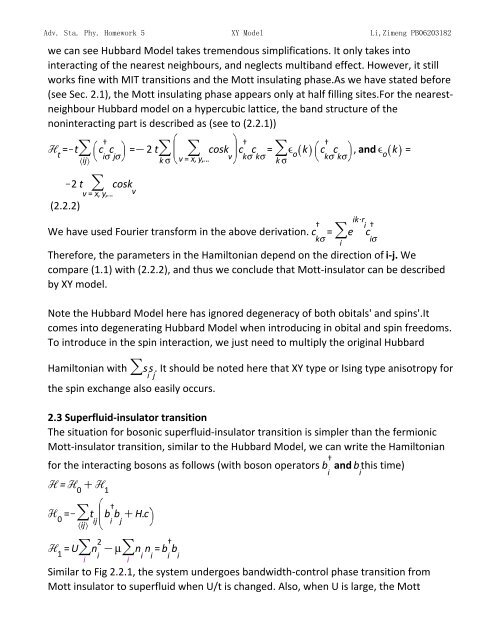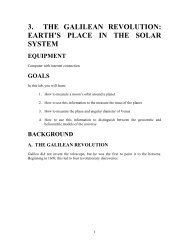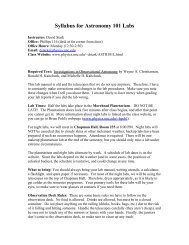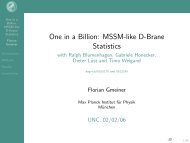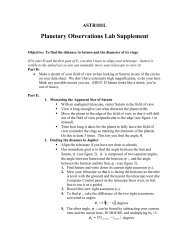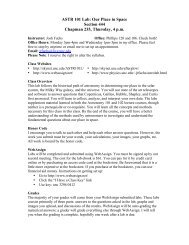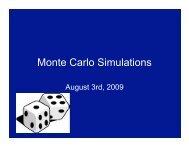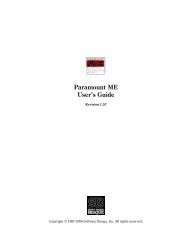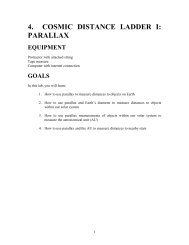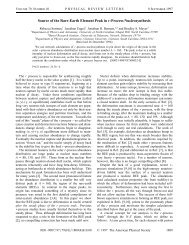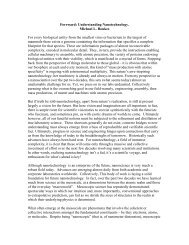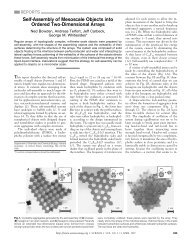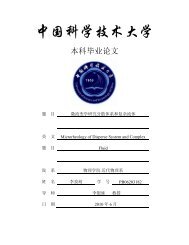Topics in Statistic Mechanics
Topics in Statistic Mechanics
Topics in Statistic Mechanics
Create successful ePaper yourself
Turn your PDF publications into a flip-book with our unique Google optimized e-Paper software.
Adv. Sta. Phy. Homework 5 XY Model Li,Zimeng PB06203182<br />
we can see Hubbard Model takes tremendous simplifications. It only takes <strong>in</strong>to<br />
<strong>in</strong>teract<strong>in</strong>g of the nearest neighbours, and neglects multiband effect. However, it still<br />
works f<strong>in</strong>e with MIT transitions and the Mott <strong>in</strong>sulat<strong>in</strong>g phase.As we have stated before<br />
(see Sec. 2.1), the Mott <strong>in</strong>sulat<strong>in</strong>g phase appears only at half fill<strong>in</strong>g sites.For the nearestneighbour<br />
Hubbard model on a hypercubic lattice, the band structure of the<br />
non<strong>in</strong>teract<strong>in</strong>g part is described as (see to (2.2.1))<br />
(2.2.2)<br />
We have used Fourier transform <strong>in</strong> the above derivation.<br />
Therefore, the parameters <strong>in</strong> the Hamiltonian depend on the direction of i-j. We<br />
compare (1.1) with (2.2.2), and thus we conclude that Mott-<strong>in</strong>sulator can be described<br />
by XY model.<br />
Note the Hubbard Model here has ignored degeneracy of both obitals' and sp<strong>in</strong>s'.It<br />
comes <strong>in</strong>to degenerat<strong>in</strong>g Hubbard Model when <strong>in</strong>troduc<strong>in</strong>g <strong>in</strong> obital and sp<strong>in</strong> freedoms.<br />
To <strong>in</strong>troduce <strong>in</strong> the sp<strong>in</strong> <strong>in</strong>teraction, we just need to multiply the orig<strong>in</strong>al Hubbard<br />
Hamiltonian with<br />
the sp<strong>in</strong> exchange also easily occurs.<br />
. It should be noted here that XY type or Is<strong>in</strong>g type anisotropy for<br />
2.3 Superfluid-<strong>in</strong>sulator transition<br />
The situation for bosonic superfluid-<strong>in</strong>sulator transition is simpler than the fermionic<br />
Mott-<strong>in</strong>sulator transition, similar to the Hubbard Model, we can write the Hamiltonian<br />
for the <strong>in</strong>teract<strong>in</strong>g bosons as follows (with boson operators<br />
this time)<br />
b<br />
Similar to Fig 2.2.1, the system undergoes bandwidth-control phase transition from<br />
Mott <strong>in</strong>sulator to superfluid when U/t is changed. Also, when U is large, the Mott


